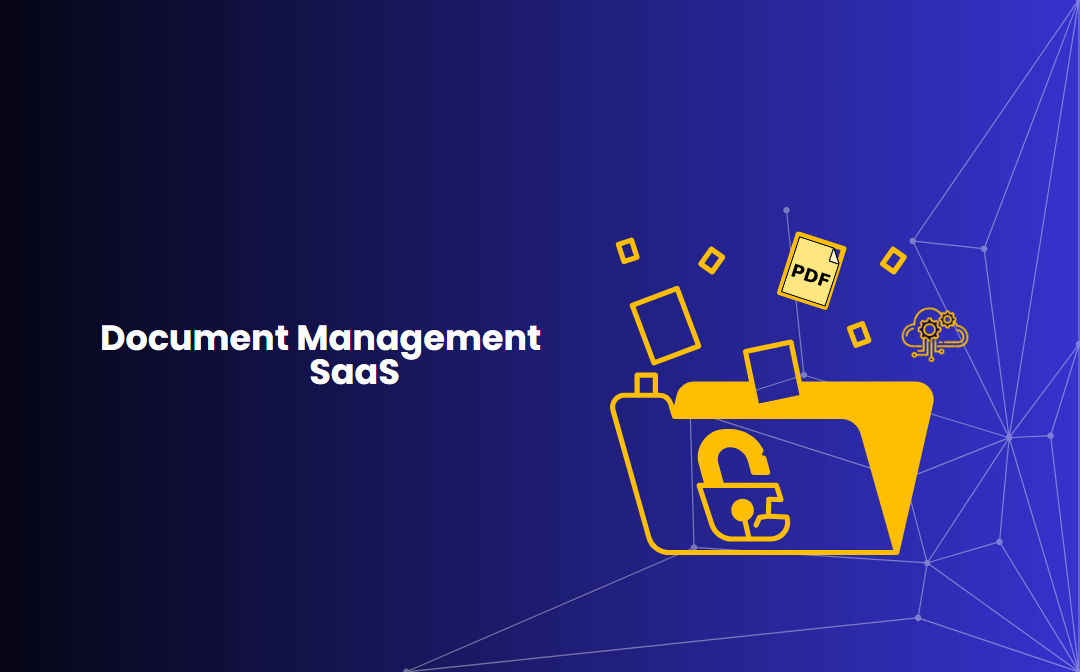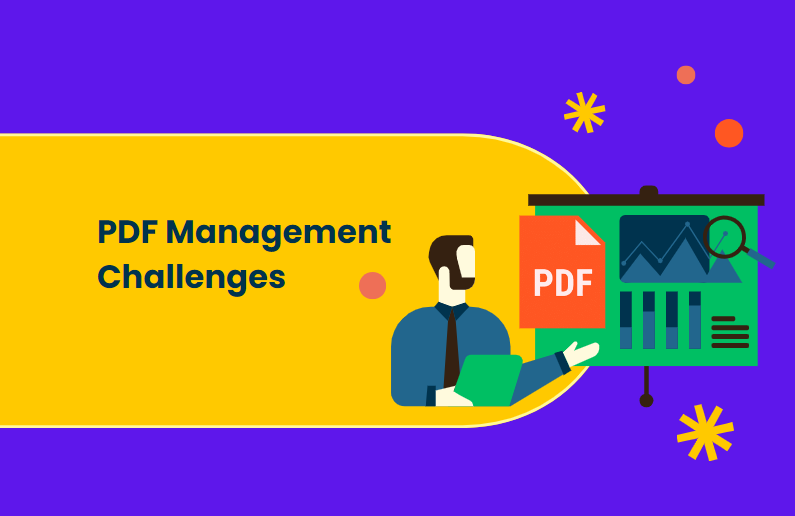
The Use of PDFs in Modern Business
Portable Document Format have been in widespread traditional use as they are consistent across both hardware and software platforms. PDFs preserve document formats, displaying content in the same format regardless of hardware or viewing software. This consistency is ideal for legal agreements, official documents, and any material where format integrity is important.
In addition, PDFs also have encryption, digital signatures, and access controls that boost document security and compliance. Their compatibility with various tools and systems also solidifies their place in business workflows.
The Emergence of SaaS and Its Impact on Document Management

SaaS has revolutionized the way that businesses operate, with cloud-based solutions that are scalable, inexpensive, and remotely accessed. Businesses no longer need to spend money on infrastructure or maintenance because the providers do everything in terms of updating, security, and uptime.
This change has extensive impacts on document management. SaaS offerings allow for real-time collaboration, automation, and organic integration with other software, which renders PDF management and other documents easy to manage. It is also a source of challenges in terms of data security, compliance, and document control.
The Challenges of PDF Management in Modern Organizations

1. Volume and Complexity
Organizations generate and receive thousands, in some cases millions, —of PDFs annually. It is not just inefficient but also error-prone, retrieval-intensive, and security-burdened to deal with this deluge manually. The more documents, the more complexity in handling, storing, and retrieving valuable information. Without appropriate management, valuable information is easily lost or difficult to find in no time, impacting productivity as well as decision-making.
2. Collaboration and Accessibility
Collaborative and remote work practices require frictionless collaboration. The workforce must be in a position to edit, share, and read PDFs on any device at any location. The conventional means of sharing files usually lead to version control as well as communication issues. Emerging companies require solutions that offer real-time, safe collaboration to enable projects to go on without disruptions.
3. Security and Compliance
Sensitive information likes to reside in PDFs—financial reports, legal documents, and HR information, for instance. Having those documents safe, encrypted, and regulations-compliant with GDPR or HIPAA isn't a possibility. A single mistake in security is the cost of costly breaches or fines. Secure PDF processing platforms provide controls and audit trails to safeguard information and document compliance.
4. Integration with Business Systems
PDFs are not self-sufficient. They must be integrated with CRM, ERP, document management systems, and workflow automation solutions in an attempt to perform optimally. Isolated documents would cause process bottlenecks and inject inefficiencies, whereas integration provides a hassle-free information flow in the organization without inconvenience. Integration is required to provide accuracy and swiftness in business processes.
5. Searchability and Data Extraction
Actionable extraction of information from PDFs—especially image or scanned documents—is still a huge issue. Incompetent and time-consuming manual input and slow OCR (Optical Character Recognition) are existing workarounds, but more and more, better OCR and AI-powered extraction are the irresistible force. Robust, high-speed search and extract functionality not only accelerates processes but also uncovers insights that more effectively inform business decisions. With the amount of unstructured data exploding, these tools become a reality of business life to remain in the game.
Why PDF Management in SaaS Matters More Than Ever
1. Scalability and Flexibility
SaaS-based PDF management tools scale perfectly with your expanding business. You can just add users, increase storage, and have access to more sophisticated features without reaching hardware limits. This enables organizations to easily adjust quickly to changing business needs, seasonal fluctuations, or unexpected growth, so document management is never a concern.
2. Cost Efficiency
With SaaS, you pay only for what you consume. You have no up-front capital expense, and maintenance is taken care of by the vendor. The secure, subscription-based approach releases funds to be invested in expansion and development. SaaS also does away with indirect costs of system downtime, labor-intensive updates, and IT support, making it an economically sound option for organizations of any size.
3. Continuous Innovation
SaaS providers patch new features, security patches, and integrations on their sites regularly. Your business gets the latest enhancements without expensive upgrades or downtime. Continuous innovation keeps your PDF file management tool technology-leader cutting-edge, where you stay ahead of the competition in an ever-evolving digital world.
4. Enhanced Security
Top SaaS PDF management systems provide enterprise-level security, such as end-to-end encryption, role-based access controls, audit trails, and compliance certifications. Your sensitive data is protected from misuse and data loss. Ongoing security updates and real-time monitoring minimize risk from cyberattacks and assure peace of mind that your data is constantly protected.
5. Seamless Collaboration
PDF cloud-based management delivers real-time collaboration. Multiple individuals can simultaneously review, mark up, and approve documents, making decision-making quicker and reducing bottlenecks. The collaborative environment allows more openness and responsibility, so all concerned stay in synch and projects run more easily.
6. Automation and Intelligence
Presently, SaaS technology applies AI and machine learning in automating tasks such as data scraping, sorting documents, and executing tasks. Not only does it save time, but it also reduces errors in addition to operational costs. Intelligent automation frees your labor force to conduct more value-adding work, create innovative solutions to deliver better results for your company.
Key Features of an Intelligent PDF Management SaaS Platform
1. Advanced Search and Indexing
A robust search engine that indexes every word, phrase, and metadata field within your PDFs is essential. Users must be able to see documents in front of them at the same time, wherever they are. Search must entail filtering and sorting by date, author, or document type such that important information is readily accessible when most required.
2. AI-Powered Data Extraction
Smart OCR and machine learning can extract structured data from unstructured PDFs—transform invoices, receipts, and contracts into actionable information. Not only for automating data entry, but also improving accuracy so decisions can be made in real-time and human intervention can be cut out.
3. Automated Workflows
Automate routing, approvals, and notifications of documents to eliminate manual intervention and maximize business processes. Automated workflows ensure your documents flow through your business without a hitch, preventing delays and ensuring internal policy and external regulatory compliance.
4. Granular Access Controls
Control what users may read, write, share, or delete documents in an exceedingly detailed manner. Role-based controls keep confidential data out of the sight of individuals not bound to view it. Those measures are worth money to companies dealing with confidential or regulated data since they rule out the risk of unintended leakage and information loss through mishap.
5. Integration Ecosystem
Simplified integration with widely used business applications such as Salesforce, Microsoft 365, Google Workspace, and Slack allows PDFs to be fully integrated into existing work processes. Integrated systems break down redundant effort, improve data consistency, and provide a more integrated, more efficient workplace.
6. Audit Trails and Compliance
The detailed logging and reporting features allow you to prove corporate policy and regulatory compliance. Secure audit trails allow you to track who has edited or viewed a document and when, making accountability and ease of regulatory audits very easy.
7. Mobile Accessibility
A mobile-friendly interface allows your employees to work with PDFs anywhere, on any device. Such mobility allows employees to be productive anywhere—office, remote office, or on the go—so that important documents are never in hand.
Best Practices for Effective PDF Management in SaaS
To maximize the use of PDF management on SaaS, follow the following best practices:
- Enact Robust Security Controls: Use encryption, multiple-factor authentication, and routine security scans to shield sensitive files. Use strict document access and sharing permissions to avoid leaking confidential documents.
- Comply with Regulations: Keep track of relevant laws and ensure your document management processes conform to regulatory standards. Monitor ongoing legal evolution and industry best practices to remain in an active compliance position.
- Encourage User Training: Spend on training programs that familiarize employees with the capabilities and best practices of the SaaS platform. Encourage ongoing learning and provide facilities for troubleshooting and extended use to obtain optimum adoption and effectiveness.
- Regularly Review and Refine Workflows: Regularly review and refine document workflows to advance efficiency and cater to evolving business needs. Observe user responses to identify bottlenecks and areas to be automated or where processes need refining.
- Leverage Analytics: Use analytics software to monitor document activity, identify areas of slowdowns, and make decisions based on data. Examining trends and user activity will help to fine-tune planning for resources as well as new ways to reduce complexity.
By adopting these best practices, organizations can make their PDF management strategy responsive to existing needs and flexible enough to respond to emerging challenges.
Real-World Impact: Case Studies

Case Study 1: Financial Services
One global bank would receive hundreds of loan applications in PDF format every day, which were previously processed manually. By implementing a SaaS-based PDF management solution that is supported by AI-powered data extraction, they were able to accelerate the process and improve accuracy to a great degree. This enabled them to get approvals faster and improve customer satisfaction. The improved efficiency also allowed the bank to take in and process more applications without necessarily hiring more staff.
Case Study 2: Healthcare
A medical practitioner needed to become HIPAA compliant when handling patient records in PDF format. With a secure SaaS solution, they were completely compliant, optimized document workflows, and facilitated safe sharing with patients and partners. Not only did this change enhance patient trust, but it also made administrative tasks easier, enabling healthcare practitioners to focus more on patient care.
Case Study 3: Legal Services
One law firm automated its entire case management operation, using SaaS PDF management to process, search, and distribute legal documents. Result: more billable hours, less administrative overhead, and improved client satisfaction. More availability and versioning of documents also reduced errors and delivered higher-quality legal services.
The Future of PDF Management in SaaS
The future of PDF management lies in intelligent automation. AI will not only extract data but also interpret context, trigger alerts, and suggest actions. Blockchain also enables document authenticity and traceability with an irreversible history of document ownership and history.
Moreover, the accelerating trend toward remote work will keep demand for cloud-based secure document processing growing. Organizations that start leveraging intelligent PDF management today will be better positioned to reimagine, compete, and thrive tomorrow. The intersection of AI, cloud, and security technologies will continue to transform the art of the possible, allowing companies to open new windows of efficiency and deliver greater value to customers. Companies also have to ensure that their digital spaces are accessible today, and that is why website accessibility audit services are becoming ever more important to remain competitive and compliant.
Conclusion
SaaS PDF management is no longer a luxury-necessity. As paper yields to digital, it becomes the lifeblood of digital business. Innovative cloud-based solutions have become an imperative for organizations so that they can be secure, efficient, and competitive.
The right PDF management solution gets your people to work smoothly with each other, automates tedious actions, and uncovers concealed insights within your documents. It's an investment that pays back.








